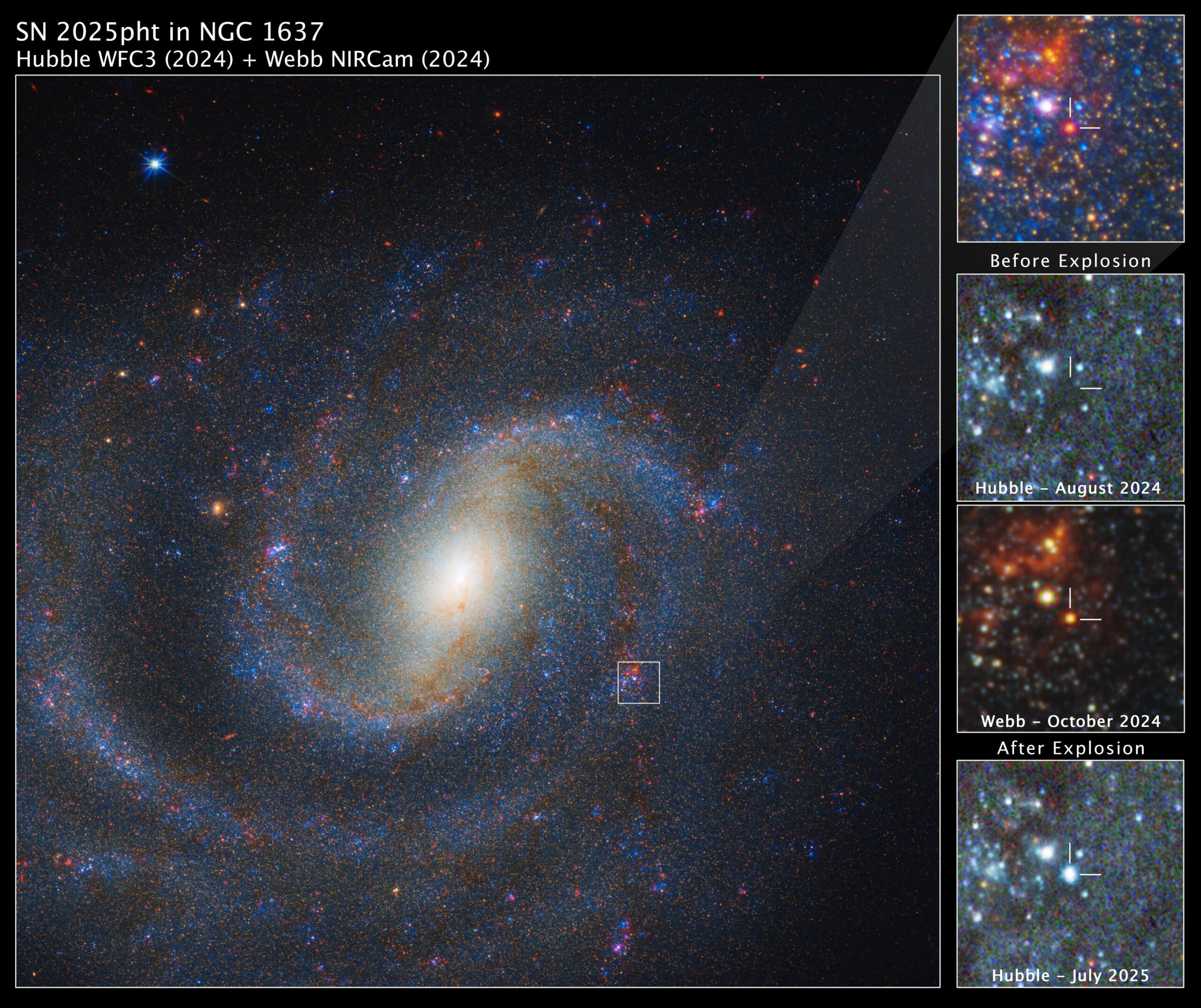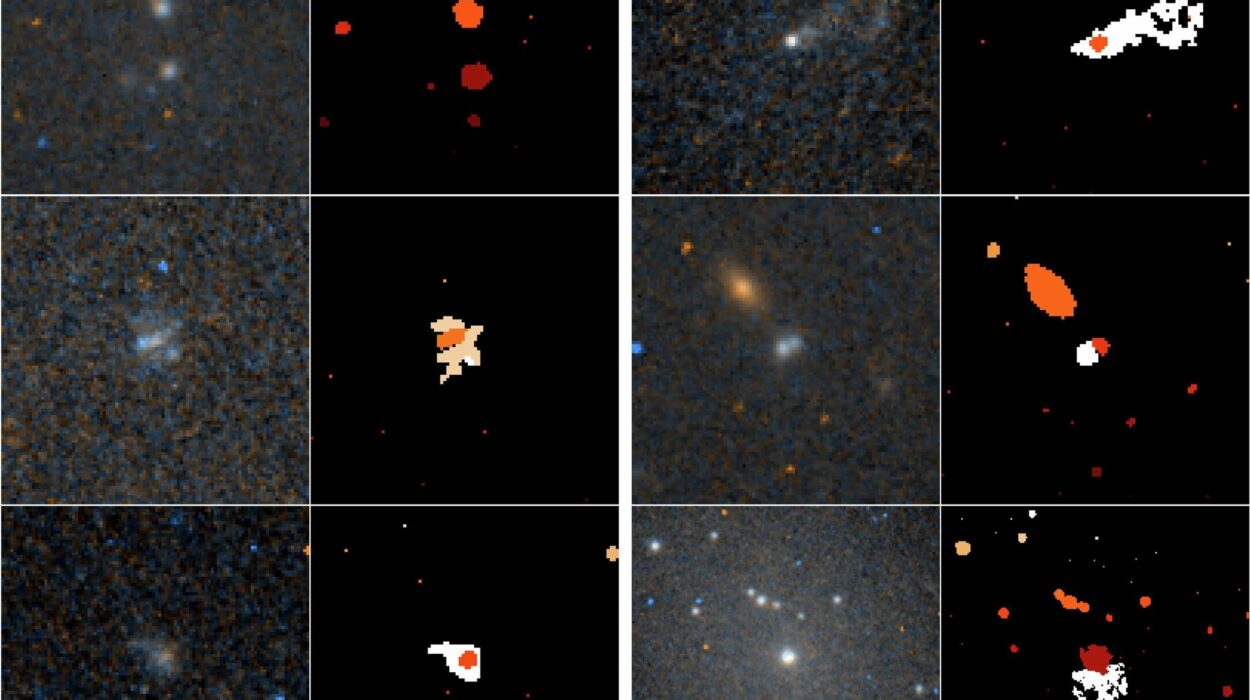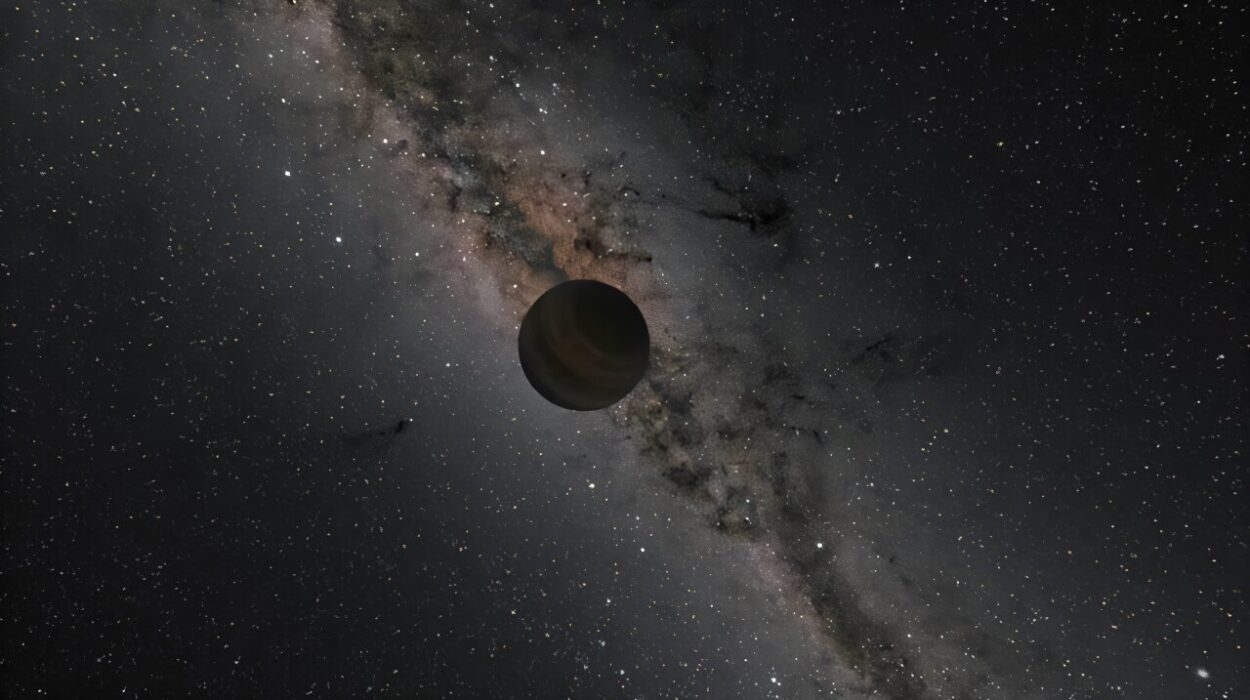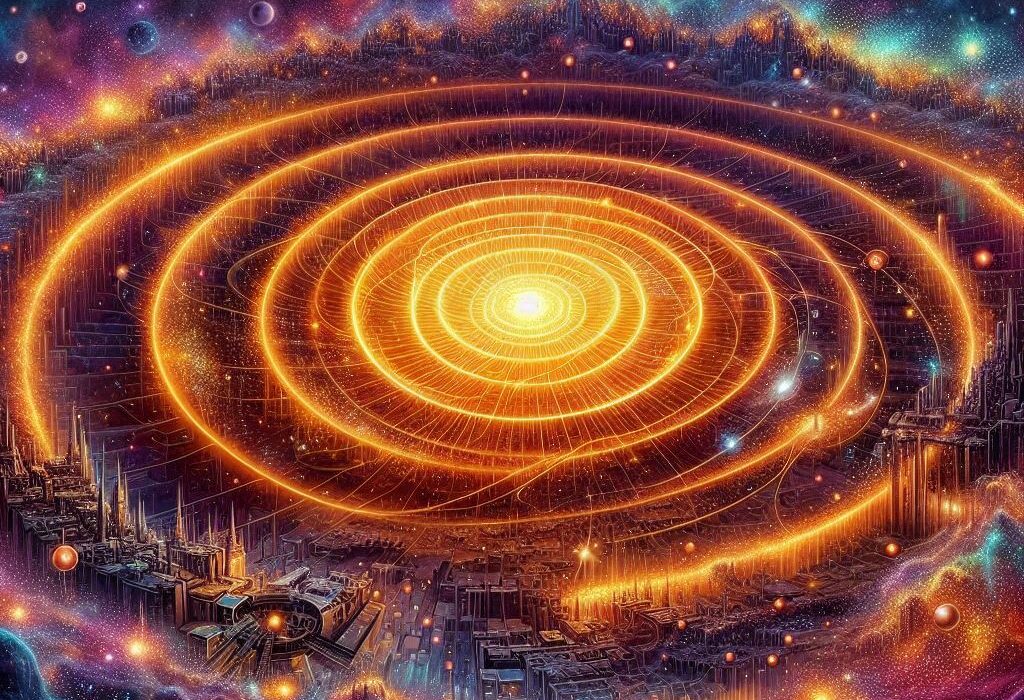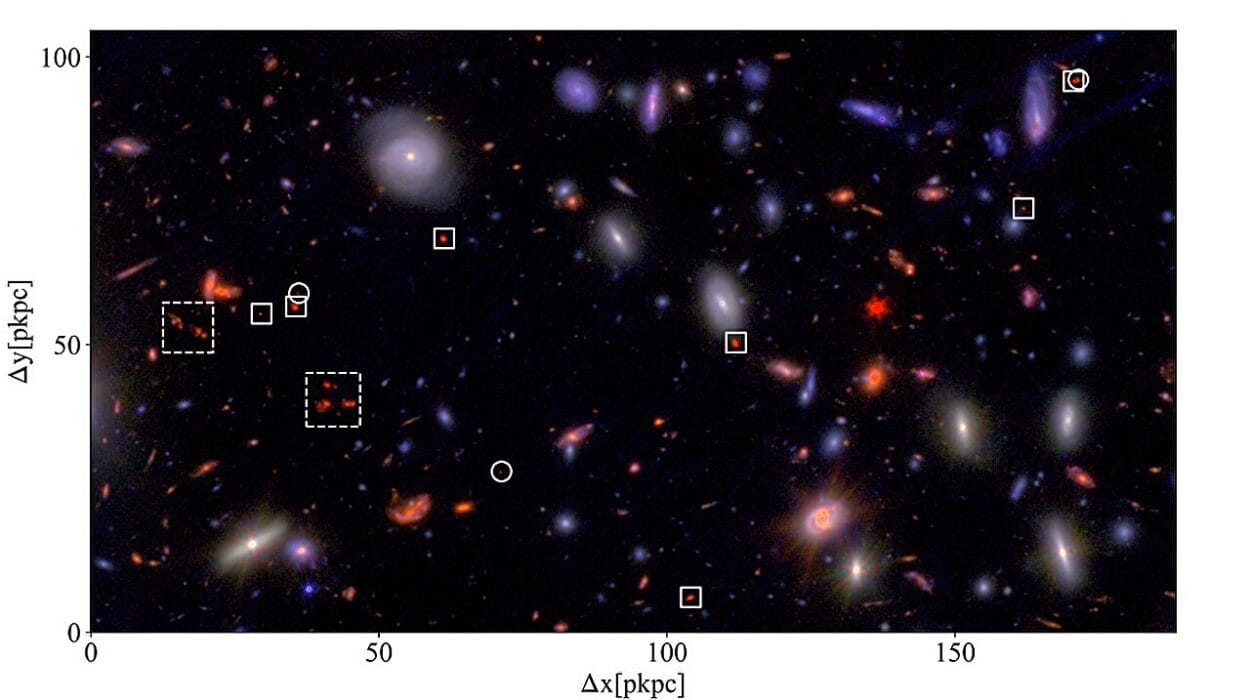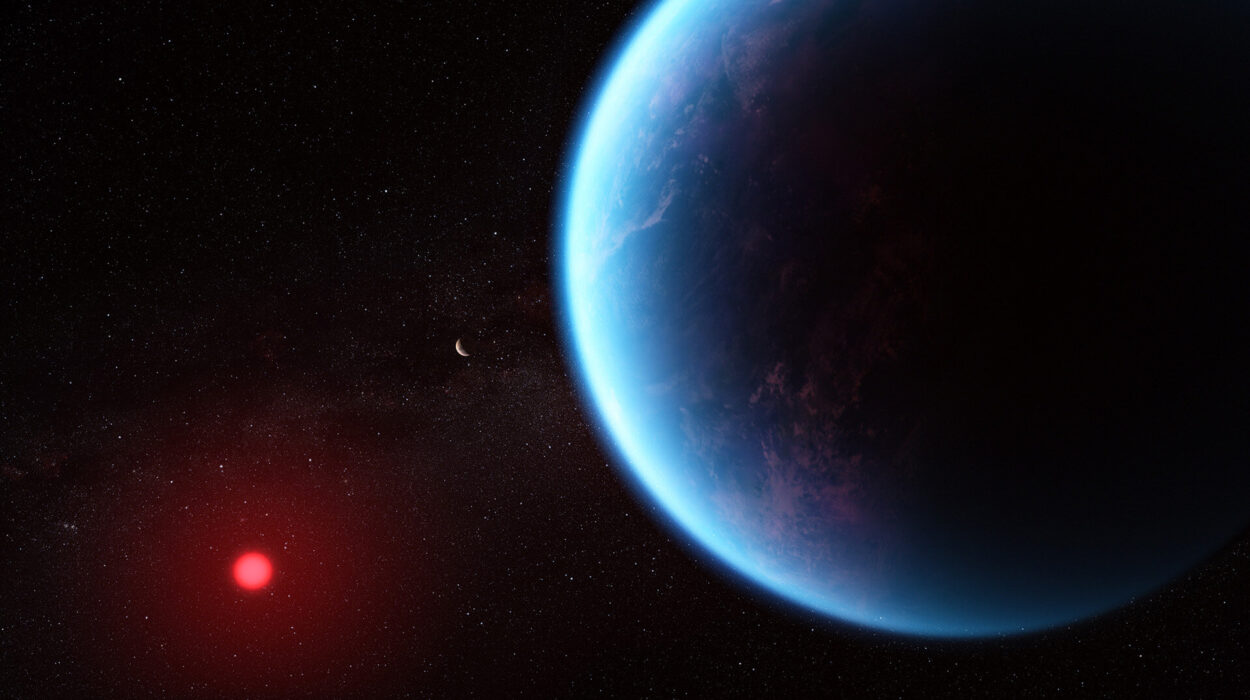Forty million years ago, in a spiral galaxy named NGC 1637, a massive red supergiant lived out its final days. Cloaked in a shroud of dust and gas, it quietly pulsed in the dark — unseen, unknown, and awaiting its inevitable fate. Then, in a cataclysmic instant, the star’s core collapsed, triggering a titanic explosion. Its light raced across the cosmos, a message from the past traveling 40 million light-years to reach Earth in the summer of 2025.
When the flash of that explosion — now called SN2025pht — arrived, astronomers on Earth were ready. Armed with the most powerful telescope humanity has ever built, NASA’s James Webb Space Telescope (JWST), a team led by Northwestern University captured the most detailed look ever at a doomed star before it died. For the first time in history, scientists identified a supernova’s progenitor star — the star that explodes — in mid-infrared light, unveiling secrets hidden for decades behind thick curtains of cosmic dust.
A Breakthrough Long in the Making
For generations, astronomers have puzzled over a cosmic paradox. Theoretical models predict that red supergiants — the massive, aging stars tens of times heavier than the Sun — should dominate the universe’s population of exploding stars. Yet, in observation after observation, they were conspicuously missing. Where were all the dying red supergiants?
The new study, published in The Astrophysical Journal Letters, provides a long-awaited answer. These stars do explode — but they do so cloaked in dust so thick it hides their brilliance from ordinary telescopes. The JWST’s unmatched infrared vision finally pierced that veil, allowing astronomers to see through the cosmic fog and reveal the truth: the missing red supergiants weren’t missing at all. They were simply hidden from view.
As lead researcher Charlie Kilpatrick from Northwestern University explained, “For multiple decades, we’ve been trying to determine exactly what the explosions of red supergiant stars look like. Only now, with JWST, do we finally have the quality of data that allows us to say precisely the exact type of red supergiant that exploded and what its immediate environment looked like.”
The Discovery of SN2025pht
The first sign of the explosion came from the All-Sky Automated Survey for Supernovae on June 29, 2025. The event was soon identified as a Type II supernova — the kind caused by the collapse of a massive star’s core. Its light originated in the nearby galaxy NGC 1637, only 40 million light-years away, making it close enough for detailed study.
Astronomers immediately compared fresh JWST observations to archival images from the Hubble Space Telescope, which had photographed the same galaxy years earlier. When the two images were overlaid, one star had vanished — replaced by the brilliant burst of a supernova. That missing star, buried in dust and glowing in deep crimson hues, was the progenitor of SN2025pht.
The star had been a red supergiant of immense size and luminosity — shining about 100,000 times brighter than our Sun. Yet, because it was wrapped in a cocoon of dust, it appeared more than 100 times dimmer in visible light. JWST’s infrared eyes, however, could cut through that dust, revealing the star’s hidden glow. “It’s the reddest, dustiest red supergiant that we’ve seen explode as a supernova,” said Aswin Suresh, a Northwestern graduate student and co-author of the study.
The Mystery of the Dust
The thick layer of dust surrounding SN2025pht’s progenitor turned out to be more than an obstacle — it was a clue. Astronomers have long suspected that massive stars in their final stages shed material into space, forming shells of dust that obscure them from view. These stars burn their fuel so furiously that they lose mass through powerful stellar winds, carrying gas and heavy elements into the void.
But SN2025pht revealed something unexpected. The dust wasn’t the typical oxygen-rich, silicate type commonly found around red supergiants. Instead, it was carbon-rich, suggesting that deep within the star’s interior, convection had stirred up carbon from its core and expelled it into space before the explosion. This discovery challenges existing theories of how red supergiants evolve and die.
“The infrared wavelengths of our observations overlap with an important silicate dust feature,” Kilpatrick explained. “What we found was a signature showing the wind was rich in carbon and less rich in oxygen — which was somewhat surprising for a red supergiant of this mass.”
This means SN2025pht’s progenitor had a turbulent, dynamic final act — a giant star reshaping its own outer layers, releasing waves of material, and creating a carbon-laced cocoon that both hid it and preserved its legacy.
Why Red Supergiants Seemed to Vanish
For years, astronomers noticed something strange: despite being the most common type of massive star, red supergiants rarely appeared as progenitors in supernova observations. Instead, most identified progenitors were less massive, brighter, and easier to detect.
This discrepancy troubled astrophysicists. If red supergiants were indeed exploding, where were they? The answer now appears to lie in dust. Massive red supergiants, it seems, live their final years in self-made twilight — wrapped in thick veils of their own making.
“I’ve been arguing for years that these missing stars are simply hidden by dust,” said Kilpatrick. “But even I didn’t expect to see such an extreme example as SN2025pht. It really pushes our understanding of how much dust these stars can produce.”
The JWST’s infrared capabilities allow scientists to finally detect light that was once invisible. Where optical telescopes like Hubble see darkness, JWST reveals glowing clouds and the faint embers of dying stars. With this new technology, astronomers can now piece together a fuller, richer story of how the universe recycles itself through stellar death and rebirth.
The Life and Death of a Giant
Red supergiants are among the largest stars in the cosmos. Imagine a star so vast that if it replaced the Sun, its outer surface would stretch beyond Jupiter’s orbit. These behemoths begin their lives as blue, hot stars burning hydrogen at a furious rate. As they exhaust their fuel, they swell and cool, turning red and enormous.
In their final stage, their cores collapse under gravity’s relentless pull, and the outer layers are hurled into space in a colossal explosion — a Type II supernova. What remains behind is either a neutron star, where atoms are crushed into a sea of neutrons, or a black hole, a point of infinite density from which nothing can escape.
SN2025pht offered a front-row seat to this cosmic drama. By studying its light before and after the explosion, scientists could reconstruct the star’s last moments and the violent forces that tore it apart. Every observation helps refine our understanding of how the heaviest elements — carbon, oxygen, iron — are forged in stellar furnaces and scattered across galaxies. These elements, in turn, form the building blocks of planets, oceans, and life itself.
In a very real sense, the death of a star like SN2025pht is part of our own story — the atoms in our bodies were once part of long-dead stars. The universe writes its history in starlight, and we are written in its ink.
A New Window on the Universe
This study marks a turning point in astrophysics — the first time JWST has directly identified a supernova progenitor. Its unprecedented infrared sensitivity opens a new era for studying how massive stars live and die.
Unlike previous generations of telescopes, JWST can detect faint, red, dust-enshrouded stars that were once invisible. This ability doesn’t just reveal single explosions; it rewrites our understanding of stellar evolution as a whole. It allows astronomers to bridge the gap between theory and observation, confirming that red supergiants do explode — they were simply hidden in plain sight.
The team at Northwestern is already planning to use JWST to search for more red supergiants nearing the ends of their lives. They hope to catch others before they explode, tracing the subtle signs of instability that precede a supernova. The upcoming Nancy Grace Roman Space Telescope, set to launch soon, will further enhance this search. With wide-field infrared imaging, Roman could monitor thousands of galaxies at once, spotting these dying stars as they shed dust and approach their final moments.
“With the launch of JWST and the upcoming Roman mission,” Kilpatrick said, “this is an incredibly exciting time to study massive stars and supernova progenitors. The quality of data we’re getting now will surpass anything we’ve seen in the last thirty years.”
A Universe of Endings and Beginnings
Every supernova is both a death and a beginning. The violent explosion that ends a star’s life also seeds the cosmos with the raw materials for new stars, new worlds, and eventually, new life. The ashes of one generation of stars become the foundation for the next.
SN2025pht, once hidden behind clouds of dust, now shines as a cosmic beacon — a reminder that even in death, stars give light. The discovery of its progenitor not only solves an astronomical mystery but also deepens our connection to the universe’s eternal cycle of creation and destruction.
In the quiet dark of space, where light travels for millions of years before reaching us, JWST has shown that even what is hidden can still be seen. And as humanity gazes further into the cosmos, we continue to uncover the ancient truth that the universe, though vast and cold, is alive with stories of fire, dust, and rebirth — and we, too, are part of its song.
